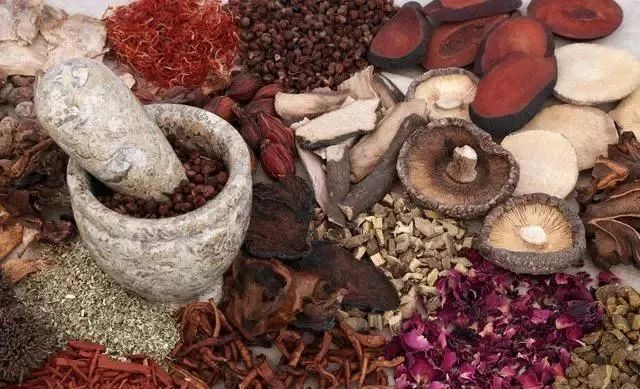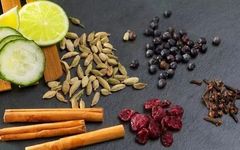1. Dispelling Cold to Activate Blood and Resolve Stasis
This involves using warm and hot herbs in combination with blood-activating and stasis-resolving herbs to warm the meridians, dispel cold, and promote blood circulation. This follows the principle of “treating cold with heat” and “blood flows when warmed.” Cold is a Yin pathogen that can constrict the meridians, leading to stagnation of Qi and blood. Here, cold stagnation includes two aspects: external cold invading the meridians, trapping Yang Qi; and internal cold generated from Spleen and Kidney Yang deficiency. In clinical applications of dispelling cold to activate blood and resolve stasis, it is essential to distinguish between warming the meridians and activating blood circulation versus tonifying Yang and invigorating fire to resolve stasis.
Commonly used herbs: Warming herbs such as Gui Zhi (Cinnamon Twig), Fu Zi (Aconite), Rou Gui (Cinnamon), Wu Zhu Yu (Evodia), Xi Xin (Asarum), and Pao Jiang (Blast-fried Ginger); Yang tonifying herbs like Yin Yang Huo (Epimedium), Ba Jiao (Morinda), Du Zhong (Eucommia), Hu Lu Ba (Trigonella), and Xian Mao (Curculigo); and blood-activating and stasis-resolving herbs such as Chuan Xiong (Szechuan Lovage), Dang Gui (Angelica), Hong Hua (Carthamus), Ru Xiang (Frankincense), Wu Ling Zhi (Flying Squirrel Feces), Gu Sui Bu (Drynaria), Tian Xian Teng (Creeping Fig), Ji Xing Zi (Corydalis), and Chuan Xu Duan (Chinese Teasel).
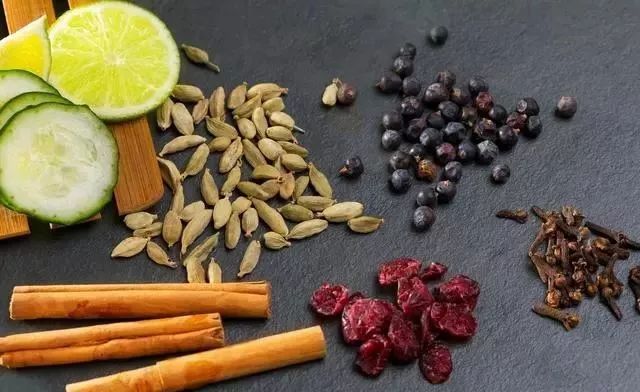
2. Eliminating Dampness to Activate Blood and Resolve Stasis
This involves using herbs that dry dampness or promote diuresis in combination with blood-activating and stasis-resolving herbs to eliminate damp pathogens and promote blood circulation. Dampness is a Yin pathogen characterized by its sticky nature, which can obstruct the flow of Qi and lead to blood stasis. Dampness can invade from the outside or arise internally, and during the pathological process, it can transform into heat or cold; it is closely related to the Spleen’s function of transformation and the Kidney’s warming function. From the perspective of vascular diseases in the limbs, external dampness often transforms into heat, so when applying methods to eliminate dampness and activate blood, it is crucial to differentiate between clearing heat and promoting dampness, tonifying the Spleen, warming the Kidney, and activating blood to resolve stasis.
Commonly used herbs: Herbs that clear heat and promote dampness such as Chi Fu Ling (Red Poria), Che Qian Zi (Plantago Seed), Dan Zhu Ye (Bamboo Leaf), Han Fang Ji (Stephania), and Ze Xie (Alisma); Spleen tonifying and dampness-promoting herbs like Fu Ling (Poria), Yi Yi Ren (Job’s Tears), Cang Zhu (Atractylodes), Bai Zhu (White Atractylodes), and Chi Xiao Dou (Adzuki Bean); Kidney warming and dampness-transforming herbs such as Yi Zhi Ren (Alpinia), Rou Gui (Cinnamon), Gui Zhi (Cinnamon Twig), Wu Yao (Lindera), Wei Ling Xian (Clematis), and Mu Guo (Papaya); and blood-activating and dampness-promoting herbs like the cold natured Yi Mu Cao (Motherwort), Ma Bian Cao (Verbena), Hu Zhang (Polygonum), Ban Zhi Lian (Lysimachia), Chuan Shan Long (Dichroa), Mu Tong (Akebia), and Luo Di Da (Lonicera), as well as the warm natured Ze Lan (Lycopus) and Tian Xian Teng (Creeping Fig), and the neutral Liu Ji Nu (Liu’s Herb) and Wang Bu Liu Xing (Vaccaria).
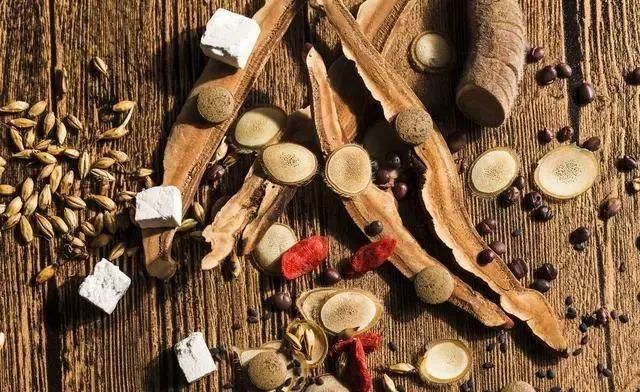
3. Regulating Qi to Activate Blood and Resolve Stasis
This involves using Qi-regulating herbs to smooth the flow of Qi, as Qi flows, blood flows, thus promoting blood circulation and resolving stasis. Qi-related issues typically involve Qi stagnation, Qi deficiency, and Qi counterflow. In limb vascular diseases, Qi stagnation and Qi deficiency are commonly seen. Qi is the commander of blood, providing the driving force for blood circulation; therefore, if Qi is obstructed, blood flow becomes sluggish, leading to stasis. Conversely, blood is the mother of Qi, and Qi relies on blood for transport; once blood stasis occurs, it can also lead to Qi stagnation, creating a pathological cycle where Qi and blood are closely related. This highlights the importance and universality of Qi-regulating methods in vascular diseases. Additionally, since the Liver governs the smooth flow of Qi and stores blood, soothing the Liver and regulating Qi is particularly significant in treating limb vascular diseases. In summary, when applying these methods clinically, it is essential to distinguish between Qi-moving and Qi-tonifying methods for activating blood and resolving stasis.
Commonly used herbs: Liver-soothing and Qi-moving herbs that are slightly cool include Chai Hu (Bupleurum), Chuan Lian Zi (Melia), and Yu Jin (Curcuma); those that are slightly warm include Fo Shou (Buddha’s Hand), Qing Pi (Green Tangerine Peel), and Zhi Ke (Bitter Orange); and neutral herbs like Xiang Fu (Cyperus) and Xiang Yuan (Citron). Qi-tonifying herbs include Huang Qi (Astragalus), Dang Shen (Codonopsis), Tai Zi Shen (Pseudostellaria), Bai Zhu (White Atractylodes), Shan Yao (Chinese Yam), and Zhi Gan Cao (Honey-fried Licorice).
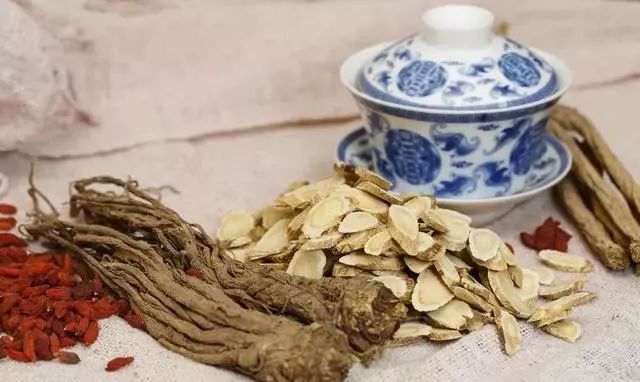
4. Clearing Heat to Activate Blood and Resolve Stasis
This involves using cold and cool herbs in combination with blood-activating and stasis-resolving herbs to clear heat pathogens, thereby promoting blood circulation and resolving stasis. This follows the principle of “treating heat with cold.” “The vessels are the residence of blood,” so when heat pathogens invade the vessels, they often affect the blood aspect; excessive heat can lead to toxicity, scorching fluids, and injuring Yin, resulting in internal heat. “When blood is heated, it congeals into clots,” obstructing the vessels and causing blood stasis. Therefore, when applying methods to clear heat and activate blood to resolve stasis, it is crucial to first distinguish between deficiency and excess, and whether the issue lies in Qi or blood. This leads to the derivation of three methods: clearing heat and cooling blood, clearing heat and detoxifying, and nourishing Yin while clearing heat to activate blood and resolve stasis.
Commonly used herbs: Herbs that clear heat and cool blood include Shui Niu Jiao (Water Buffalo Horn), Chi Shao (Red Peony), Mu Dan Pi (Moutan Root), Zi Cao (Lithospermum), Sheng Di (Rehmannia), Xuan Shen (Scrophularia), and Da Qing Ye (Isatis); herbs that clear heat and detoxify include Jin Yin Hua (Honeysuckle), Lian Qiao (Forsythia), Zi Hua Di Ding (Viola), Pu Gong Ying (Dandelion), Qian Li Guang (Sonchus), and Tu Fu Ling (Smilax); and herbs that nourish Yin and clear heat include Sheng Di (Rehmannia), Xuan Shen (Scrophularia), Tian Hua Fen (Trichosanthes), Bai Shao (White Peony), Mai Dong (Ophiopogon), Sha Shen (Glehnia), Di Gu Pi (Lycium), Zhi Mu (Anemarrhena), and Huang Bai (Phellodendron). Blood-activating and stasis-resolving herbs that also clear heat and cool blood include Mu Dan Pi (Moutan Root), Zi Cao (Lithospermum), Dan Shen (Salvia), Chi Shao (Red Peony), Yu Jin (Curcuma), Ling Xiao Hua (Campsis), and Gui Jian Yu (Corydalis), while those that clear heat and detoxify include Hong Teng (Sargentodoxa), Hu Zhang (Polygonum), Bai Jiang Cao (Patrinia), Jin Qiao Mai (Polygonum), and Luo Di Da (Lonicera).
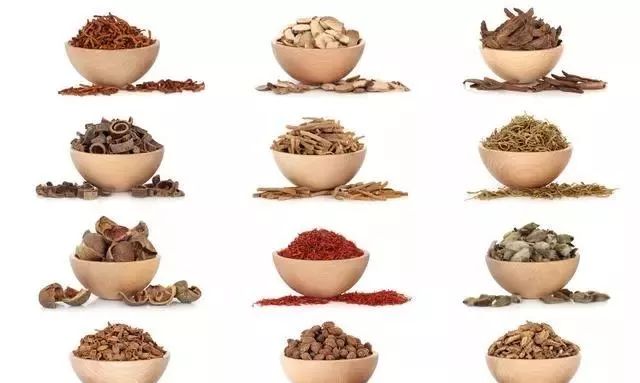
5. Nourishing Blood and Yin to Activate Blood and Resolve Stasis
This involves using blood-nourishing and Yin-nourishing herbs in combination with blood-activating and stasis-resolving herbs to increase blood volume, ensuring that the vessels are filled and blood circulation is promoted. When blood flows through the vessels, a sufficient volume ensures that the vessels are filled; when blood is deficient and Yin fluids are insufficient, the vessels can become atrophied, leading to stasis. Therefore, it is essential to nourish blood and Yin, increase fluids, and activate blood to resolve stasis.
Commonly used herbs: Blood-nourishing and Yin-nourishing herbs include Sheng Di (Rehmannia), Shu Di (Rehmannia, cooked), He Shou Wu (Fo-Ti), Gou Qi Zi (Goji Berry), and Long Yan Rou (Longan); blood-activating herbs that also nourish blood include Ji Xue Teng (Spatholobus) and Dang Gui (Angelica).
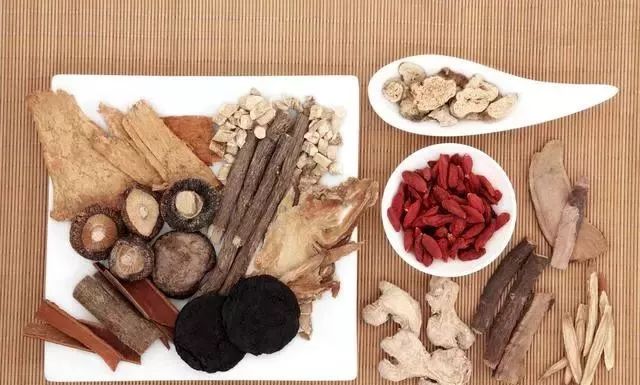
6. Calming Liver Yang to Activate Blood and Resolve Stasis
This involves using herbs that calm Liver Yang in combination with blood-activating and stasis-resolving herbs to ensure that Yang is subdued, blood is harmonized, and vessels are unobstructed, achieving the goal of resolving stasis. When Liver Yang rises excessively, blood follows the Qi in reverse and moves upward, leading to obstruction of the vessels and resulting in blood stasis. Therefore, it is necessary to calm Liver Yang and relieve obstruction to resolve blood stasis.
Commonly used herbs: Gou Teng (Uncaria), Dai Zhe Shi (Hematite), Sheng Long Gu (Dragon Bone), Sheng Mu Li (Oyster Shell), Bie Jia (Soft-shelled Turtle Shell), Ci Ji Li (Tribulus), Tian Ma (Gastrodia), and Shi Jue Ming (Abalone Shell). Blood-activating and stasis-resolving herbs that are slightly cool and moist include Dan Shen (Salvia), Mu Dan Pi (Moutan Root), Xuan Shen (Scrophularia), Chi Shao (Red Peony), Niu Xi (Achyranthes), Yu Jin (Curcuma), and Ling Xiao Hua (Campsis).
